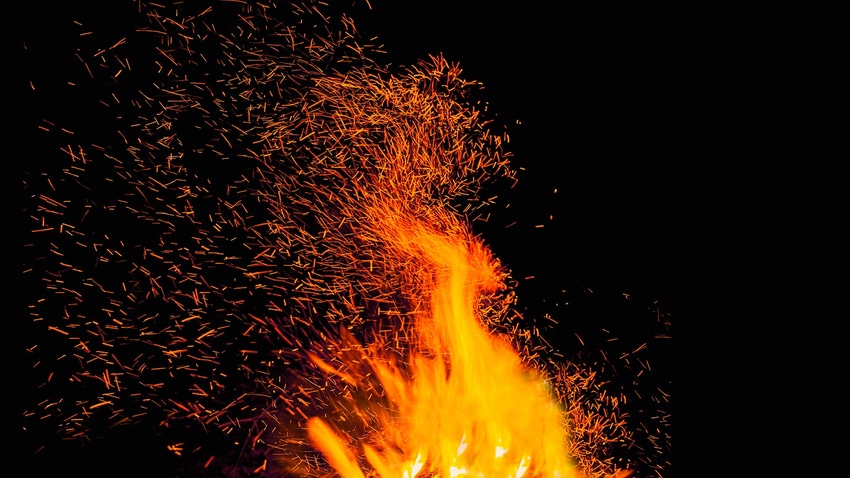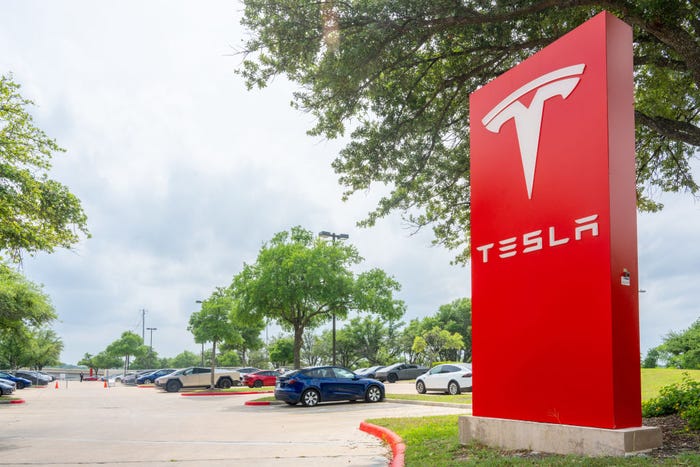Amid one of the worst wildfire seasons for the U.S. on record, intelligent connected technologies including sensors and drones should empower the response.
October 13, 2021

In 2020, wildfires in California burned more than 4 million acres, killing 33 people. Already this year, wildfires have burned more than 2 million acres and claimed the lives of three people, according to the California Department of Forestry and Fire Protection.
Across the United States, 58,950 wildfires burned 10 million acres in 2020, according to the National Interagency Fire Center. And this year, 45,339 wildfires have burned 6 million acres.
Typically, wildfires start small, but they spread quickly, destroying everything in their paths, including homes and the environment, and putting lives at risk.
Someone tosses a lit cigarette butt or doesn’t properly extinguish a campfire. Maybe lightning strikes a tree and ignites a blaze or maybe when a landscaper is mowing a customer’s lawn, the lawnmower blade creates sparks that land on dry vegetation.
For example, the 2007 Zaca Fire in Santa Barbara County, California., which burned almost a quarter million acres, started due to sparks from a grinding machine that was being used to repair a water pipe on private property.
The key to combating wildfires is early detection. And that’s where the Internet of Things (IoT) can help.
Wildfire Detection: Drones and IoT
Drones and aerial surveillance systems have been used for wildfire detection to assess and monitor conditions, but they typically have a human observer viewing the live camera footage being captured, said Karen Panetta, professor of electrical and computer engineering and dean of graduate education for the School of Engineering, Tufts University and an IEEE Fellow.
This requires significant human labor and depends on the human ability to detect these incidents among different weather conditions, ground cover and various lighting, such as day or night, she said.
“But what the human eye can see is limited,” Panetta said. “IoT sensors can detect far more information than the human eye.”
Including different types of IoT sensors, such as thermal or chemical sensors for detecting hot spots, on drones while other low-cost sensors are deployed to help measure moisture and ground conditions. This enables first responders to assess at risk areas and optimize early wildfire detection and containment, according to Panetta.
“However, sensors simply provide data,” she said. “What we do with sensor data and how we process this massive amount of information requires it to be conducive to a human’s ability to consume it.”
For instance, consider a drone patrolling a highway and known campsites to look for heat signatures for improperly discarded cigarettes or campfires not properly extinguished. Artificial intelligence (AI) could be used to provide rangers with a map of active campfires and quantify danger levels based on historic data of scenarios that caused fires.
Low-cost sensors dispersed on the ground to help assess areas at risk could also help proactive wildfire detection and mitigation, she said. This would require that they be strategically placed to ensure they do not harm wildlife that may ingest them. They also should be weather resistant.
However, these systems would require a wireless infrastructure to communicate their information to a central monitoring hub, Panetta said. In the future, we will see advances in wireless networking for low-cost localized networks that can connect to these sensors and automatically reconfigure the networks when sensors fail.
One step beyond this is the creation of low-cost, environmentally safe sensors that could be aerially dropped across vast areas and then remotely configured into a network to monitor conditions. The challenges with creating such sensors are making them tolerant to impact, moisture, ensuring they’re safe when ingested, low-cost and require minimal power.
Many of the biomaterial-inspired sensors currently being developed for medical applications hold promise for solving some of these challenges, according to Panetta.
While these approaches are directed at fire detection and prevention, today the real impact of IoT is how we are using these technologies to fight fires and assist firefighters and first responders with situational awareness to manage operations, keep people safe and monitor conditions.
“Aerial surveillance has played a crucial role in these endeavors,” Panetta said.
LoRa and IoT-enabled Sensors
Most wildfire detection solutions are based on optical systems using cameras mounted on poles or on satellites that detect plumes of smoke from fires rising above the tree canopy, said Carsten Brinkschulte, co-founder and CEO of Dryad Networks, a German environmental IoT startup. However, optical solutions can be hindered by the tree canopy or clouds, and they can take several hours to detect wildfires, he said.
Dryad has developed a system for early wildfire detection, dubbed Silvanet, that reduces reaction time and enables firefighters to extinguish a fire before it spreads out of control, he said.
The system, which uses solar-powered gas sensors placed in a forest, can detect wildfires within the first hour from ignition using built-in machine-learning, analyzing the gas patterns to reliably detect a fire, according to Brinkschulte.
To connect the IoT system, Silvanet provides a long-range (LoRa) wireless network that has been extended with a patent-pending mesh network architecture to cover very large areas of the forest, he said.
“Built as a general-purpose IoT network infrastructure, the Silvanet mesh network can be used by any LoRa-compliant third party sensor, opening Silvanet to health and growth-monitoring applications, such as soil-moisture, sap-flow or tree-growth monitoring, feeding valuable data into the central Silvanet Cloud Platform, providing data analytics and alerting services to Dryad’s customers,” Brinkschulte said.
Dryad has demonstrated a proof of concept in a forest in Germany, using the 1302 transceiver from Semtech Corp.
The work that Dryad Networks is doing is important, said Marc Pégulu, vice president, IoT strategy and products at Semtech, a founding member of the LoRa Alliance.
“Semtech, as an organization, is committed to making the world better by driving innovation forward and our collaboration with Dryad is another example of this,” he said. “Living in California myself, I know too well the devastation that wildfires have on our planet. Dryad’s sensors utilizing our Semtech LoRa devices, have the ability to limit the impact of this devastation by safely, securely and remotely monitoring the forests for any potential danger.”
The LoRaWAN standard is ideal for this implementation because of its long-range, low-power offering, ensuring that even in the most wooded, secluded or remote areas connectivity is always-on and always ready to alert authorities of changes in temperature, humidity and air pressure, for example, Pégulu said.
Challenges of Using IoT to Detect Wildfires
Early experiments with field-deployed sensors and digital fire detectors were conclusive— it’s impractical at scale, said Brian Gilmore, director of IoT product management at InfluxData, developer of InfluxDB, an open source time series database.
“Internet connections are drastically limited in remote locations where many wildfires start,” he said. “Mesh networking of sensors at the scale required to blanket hundreds of thousands of acres is nearly impossible from a cost and implementation perspective, especially when you consider these sensor networks will regularly be destroyed by the exact thing they are supposed to detect.”
But there’s still a role for IoT and sensors in wildfire detection and prevention, Gilmore said. Infrared sensors mounted to drones, autonomously scanning the forest floors, give early visibility into the time and temperature of ignition and smoldering brush.
Incident response applications can relay alerts to first responders and direct them to strategic locations using the GPS sensors on their smartphones. And smaller and more manageable networks of those field-deployed temperature sensors play a huge role in the modeling of fire behavior through controlled burns.
Mapping the movement of heat and how it’s affected by wind, vegetation and other environmental factors play heavily into many response and evacuation strategies, Gilmore said. “There’s an infinite number of other digital signals, such as social media posts, traffic from navigation apps and smart home smoke detectors that can and should be leveraged as well,” he said.
About the Author(s)
You May Also Like




.png?width=700&auto=webp&quality=80&disable=upscale)
.png?width=300&auto=webp&quality=80&disable=upscale)


.png?width=300&auto=webp&quality=80&disable=upscale)